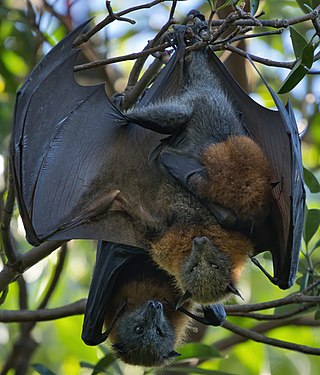
CSIRAC, originally known as CSIR Mk 1, was Australia's first digital computer, and the fifth stored program computer in the world. It is the oldest surviving first-generation electronic computer (the Zuse Z4 at the Deutsches Museum is older, but was electro-mechanical, not electronic), and was the first in the world to play digital music.

The Commonwealth Scientific and Industrial Research Organisation (CSIRO) is an Australian Government agency responsible for scientific research.

Sir William Ian Clunies Ross was an Australian veterinary scientist. He has been described as the "architect" of Australia's scientific boom, for his stewardship of the Commonwealth Scientific and Industrial Research Organisation (CSIRO), the Australian scientific organisation.

The Australian Conservation Foundation (ACF) is Australia's national environmental organisation, launched in 1965 in response to a proposal by the World Wide Fund for Nature for a more co-ordinated approach to sustainability.

Joseph Lade Pawsey was an Australian scientist, radiophysicist and radio astronomer.
John Robert Philip AO FAA FRS was an Australian soil physicist and hydrologist, internationally recognised for his contributions to the understanding of movement of water, energy and gases. While he never performed his own experimental work, he was recognised for his skills in mathematics that could be used to explain physical processes and solve real world problems.

The grey-headed flying fox is a megabat native to Australia. The species shares mainland Australia with three other members of the genus Pteropus: the little red P. scapulatus, spectacled P. conspicillatus, and the black P. alecto. The grey-headed flying fox is the largest bat in Australia.

Nancy Tyson Burbidge was an Australian systemic botanist, conservationist and herbarium curator.
Harold James Frith AO was an Australian administrator and ornithologist. He was born at Kyogle, New South Wales and studied Agricultural Science at Sydney University. Harry Frith first joined the CSIRO Division of Plant Industry but later transferred to the Division of Wildlife and carried out extensive research on malleefowl, waterfowl, especially magpie geese, and pigeons. He eventually became Chief of the Division and was instrumental in proposals that led to the establishment of Kakadu National Park.

Sir Albert Cherbury David Rivett was an Australian chemist and science administrator.
Pteropus brunneus is an extinct species of flying fox in the family Pteropodidae. It was said to be found at Percy Island, southeast of Mackay, Queensland, off the northeast coast of Australia.

Sir Alan Walsh FAA FRS was a British-Australian physicist, originator and developer of a method of chemical analysis called atomic absorption spectroscopy.
Richard Schodde, OAM is an Australian botanist and ornithologist.

Geoffrey Graham Garrett is the former CEO of the Commonwealth Scientific and Industrial Research Organisation (CSIRO) and Queensland Chief Scientist 2011-2016.
Sir John Percival Vissing Madsen FAA was an Australian academic, physicist, engineer, mathematician and Army officer.
Albert Lloyd George Rees was an Australian chemical physicist.
Mildred Macfarlan Barnard was an Australian biometrician, mathematician and statistician.

Rabbit plagues in Australia have occurred several times throughout parts of Australia since wild European rabbits were introduced by European colonists.

Hilda Geissmann was a pioneering Australian botanist, naturalist and photographer whose botanical and ornithological research within the Mount Tamborine area of South East Queensland significantly contributed to the early ecological understanding of the region.
Jean Conochie was also known as Jean Athola Conochie. She was honoured by The Library Association of Australia with the H.C.L. Anderson Award in 1985 for outstanding service to librarianship in Australia.












